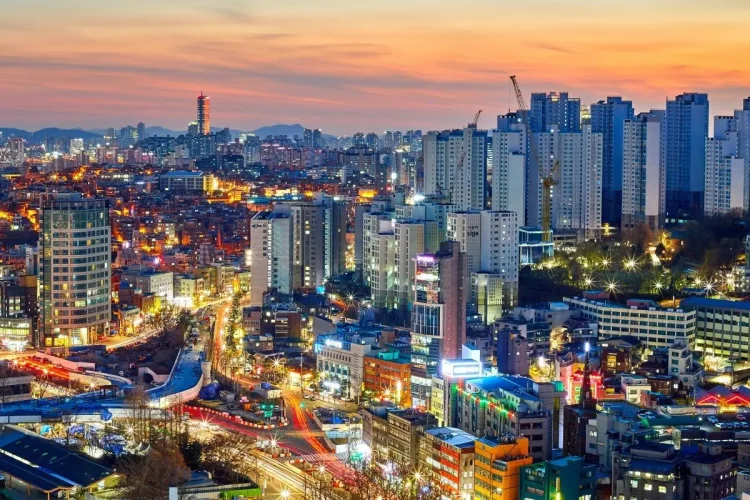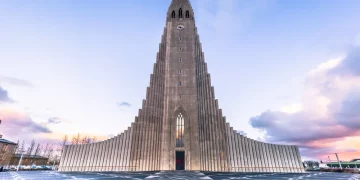Introduction to Seoul as a Vibrant Travel Hotspot
Seoul, South Korea’s capital, is a city of contrasts—where ultra-modern skyscrapers coexist with centuries-old palaces, and the energy of K-pop and street food pulses through streets that carry centuries of history. It’s a city that constantly evolves, seamlessly blending its rich traditions with cutting-edge technology and contemporary culture. Over the past decade, Seoul has become a global travel hotspot, attracting millions of visitors annually who come to experience everything from the thrills of K-pop culture to the tranquil beauty of ancient temples.
Seoul stands as a symbol of Korea’s rapid growth and modernization, yet it hasn’t lost its deeply rooted cultural heritage. Visitors who step into this dynamic metropolis find themselves at the crossroads of the past and the future. Whether you are strolling along the bustling streets of Gangnam or exploring the serene Gyeongbokgung Palace, there’s something for every kind of traveler in Seoul.
The city has evolved into one of the most dynamic and trendsetting destinations in Asia and the world. From being the birthplace of the K-pop phenomenon to becoming a global leader in technology and design, Seoul has carved out a unique identity that blends old and new. In this article, we’ll explore why Seoul is the perfect blend of modernity and tradition, with real-life stories of how travelers engage with both sides of the city. We’ll also look at some must-visit spots and provide tips for making the most of your time in Seoul’s trendiest districts.
Real-life Travel Stories of Experiences in Seoul: From K-pop to Street Food
- The K-pop Experience:
For many visitors to Seoul, K-pop is one of the most exciting aspects of their journey. The global success of groups like BTS, BLACKPINK, and EXO has made Seoul the epicenter of K-pop culture. A first-time visitor, Maria from Spain, recounts her experience of attending a live K-pop concert at the MBC World K-Pop Center, a dedicated space for all things related to Korea’s music industry.
She recalls the electrifying atmosphere as fans gathered in unison to cheer on their favorite idols. For Maria, the concert was not just about the music; it was an immersive cultural experience, where the audience was fully engaged in the performance. “It felt like being part of a larger cultural movement. Everyone there was united by the love of K-pop, and the energy was contagious,” Maria shares. The city’s influence in global pop culture cannot be overstated—Seoul is a must-visit destination for anyone wanting to experience the heart of K-pop firsthand.
- Street Food and Late-Night Eats:
Street food is another integral part of the Seoul experience, offering a tantalizing taste of Korean culture. Kevin, a solo traveler from the United States, shares his unforgettable evening of food discovery in Seoul’s Myeongdong district. “I walked through the bustling streets, surrounded by food stalls selling everything from spicy tteokbokki (rice cakes) to crispy hotteok (sweet pancakes). The best part was the interaction with vendors, who explained their dishes and welcomed me into their culinary world,” he says.
One of Kevin’s favorite experiences was trying the iconic Korean fried chicken. “The combination of crispy, tender chicken with sweet and spicy sauces is something I’ll never forget. And don’t forget the soju,” he adds with a laugh. For many travelers, food is a gateway to understanding the local culture, and in Seoul, food is everywhere. From casual street vendors to fine dining experiences, Korean cuisine offers a wide range of tastes and textures that will make your mouth water.

- Nightlife and the Energy of Seoul:
Seoul’s nightlife is legendary. Whether you’re exploring the glitzy clubs in Gangnam or enjoying a quiet drink in a cozy Hanok-style bar in Itaewon, the city has something for everyone when the sun sets. For international travelers like Olivia from Australia, it’s the mix of nightlife and the deep connection to local culture that makes Seoul stand out.
“I loved how the nightlife wasn’t just about going to clubs,” Olivia says. “In Itaewon, I experienced a whole new side of Seoul—its international side, where people from all over the world come together. But when I visited the Hanok bars in Bukchon, I got a taste of something much more traditional, with cozy interiors and drinks made from local ingredients.”
How Seoul Blends Contemporary Culture with Ancient Traditions
The blending of old and new is one of Seoul’s most striking characteristics. Modern skyscrapers stand side-by-side with ancient temples, while traditional tea houses coexist with high-tech shopping malls. This blend of the contemporary and traditional is part of what makes Seoul such a compelling destination.
- The Royal Palaces and Modern City Life:
Seoul’s royal palaces, such as Gyeongbokgung and Changdeokgung, are architectural masterpieces that allow visitors to step back in time. These sites serve as reminders of Seoul’s long history as the heart of the Joseon Dynasty, and their preservation is a testament to Korea’s respect for its past. However, these ancient structures are not isolated from the modern world. They are surrounded by bustling shopping districts, high-rise buildings, and fast-paced city life, creating an interesting juxtaposition of past and present.
Visitors can enjoy a traditional changing of the guard ceremony at Gyeongbokgung Palace and then step outside the palace gates into the vibrant streets of the Insadong area, filled with art galleries, antique shops, and traditional tea houses. This seamless transition from the ancient to the modern is what makes Seoul unique—it’s a city that hasn’t lost touch with its heritage while embracing the future.
- Contemporary Design Meets Ancient Culture:
Seoul is known for its design-forward approach to architecture, fashion, and technology. The city boasts innovative spaces like the Dongdaemun Design Plaza (DDP), an iconic building that blends futuristic design with Korean culture. Designed by renowned architect Zaha Hadid, the DDP is an architectural marvel that draws design lovers from around the world.
Yet, even within the realm of modernity, Seoul honors its cultural roots. For example, in the area around Bukchon Hanok Village, you’ll find beautifully preserved traditional Korean houses (hanok) that stand in stark contrast to the sleek, modern buildings nearby. The coexistence of these different architectural styles reflects the broader cultural dynamic in Seoul, where the old and the new are always in dialogue.
Must-Visit Spots in Seoul: Gyeongbokgung Palace, Gangnam, and Bukchon Hanok Village
To truly experience the blend of tradition and modernity in Seoul, there are several must-visit locations that capture the essence of this vibrant city.
- Gyeongbokgung Palace:
Gyeongbokgung is one of Seoul’s most iconic landmarks, built in the late 14th century during the Joseon Dynasty. It is the largest of the Five Grand Palaces and holds significant historical and cultural importance. Visitors can explore the expansive grounds, marvel at the intricate architecture, and learn about Korea’s royal history. Don’t miss the changing of the guard ceremony, a colorful and ceremonial display that takes place at the main gate.
- Gangnam:
The district of Gangnam has gained international fame, largely due to the global success of Psy’s hit song “Gangnam Style.” But beyond its pop-culture fame, Gangnam is a hub of high-end shopping, modern architecture, and cutting-edge technology. Visitors can explore luxury shopping malls like COEX Mall, indulge in delicious Korean BBQ, and experience the bustling energy of one of Seoul’s most affluent neighborhoods.
- Bukchon Hanok Village:
To experience traditional Seoul, a visit to Bukchon Hanok Village is a must. This picturesque village is home to hundreds of hanok, traditional Korean houses, many of which are still occupied by locals. The narrow alleys, traditional roofs, and peaceful atmosphere provide a beautiful contrast to the nearby modern cityscape. Walking through Bukchon gives visitors the feeling of stepping back in time, offering a glimpse into Korea’s cultural heritage.
Tips for Making the Most of Your Visit to Seoul’s Trendy Districts
- Explore Beyond the Tourist Spots: While Gyeongbokgung, Gangnam, and Bukchon are must-visit locations, don’t forget to explore some of the lesser-known neighborhoods in Seoul. Areas like Itaewon and Hongdae offer vibrant local experiences, from indie music bars to quirky cafes.
- Indulge in Korean Cuisine: Seoul’s food scene is a major highlight of any trip. Be sure to try authentic Korean dishes like bibimbap, bulgogi, and kimchi, and explore street food in districts like Myeongdong and Dongdaemun.
- Embrace K-pop Culture: Whether it’s through a live concert, a visit to K-pop agencies, or shopping for K-pop merchandise, immersing yourself in K-pop culture is a unique part of the Seoul experience.
- Use Public Transport: Seoul’s public transportation system is one of the most efficient in the world, and it’s the best way to explore the city. The subway and bus networks are easy to navigate, and they provide access to nearly every corner of Seoul.
- Respect Traditions and Etiquette: While in Seoul, be mindful of local customs. Always be respectful when visiting temples, remove your shoes when entering traditional homes, and observe quietness in certain sacred spaces. Simple gestures of respect will enrich your experience.
Conclusion
Seoul is a city that constantly reinvents itself while maintaining a deep connection to its past. Whether you’re exploring the towering skyscrapers of Gangnam, soaking in the cultural heritage of Bukchon Hanok Village, or tasting delicious street food in Myeongdong, Seoul offers a balanced experience of modernity and tradition that captivates every traveler. Its trendiness is not just a matter of fashion—it’s about the seamless blend of technology, culture, and history that makes it one of the world’s most dynamic and exciting cities to visit.





















